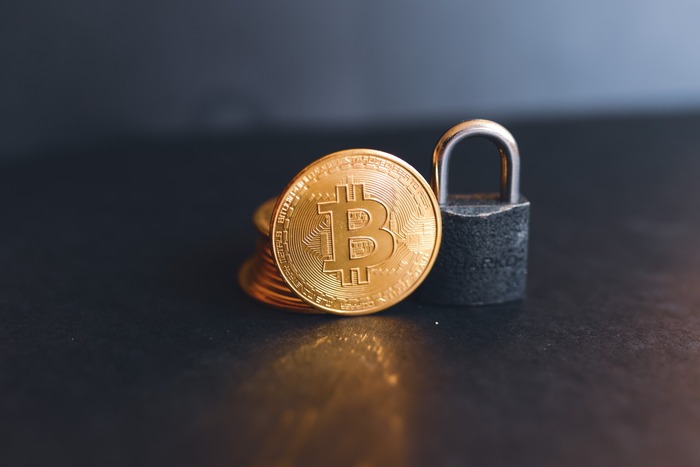
Bitcoin’s design makes it a challenge for its users to interact with decentralized applications built on Ethereum. Wrapped Bitcoin (WBTC) bridges this gap by mimicking Bitcoin’s price on Ethereum.
This guide will delve into Wrapped Bitcoin’s significance and how it aids in advancing decentralized finance (DeFi).
What Is Wrapped Bitcoin?
Wrapped Bitcoin is a tokenized version of Bitcoin that exists on the Ethereum blockchain. It’s called ‘wrapped’ because the actual Bitcoin is stored or ‘wrapped’ in a digital vault and represented on the Ethereum blockchain as an ERC-20 token.
Each WBTC token corresponds to one Bitcoin in this vault, ensuring that the value of WBTC is always pegged to the value of Bitcoin. This 1:1 parity is maintained by a network of decentralized custodians, merchants, and users participating in a transparent proof-of-reserve system.
Why Do We Need Wrapped Bitcoin?
The genesis of Wrapped Bitcoin was driven by the desire to integrate the value and investment potential of Bitcoin into the thriving ecosystem of Ethereum applications. Bitcoin operates on a separate blockchain from Ethereum and hence cannot directly interact with Ethereum’s smart contracts.
By wrapping Bitcoin into an ERC-20 token, WBTC enables Bitcoin to participate in Ethereum’s vibrant DeFi ecosystem. Bitcoin holders can trade WBTC on Ethereum’s decentralized exchanges, use it as collateral for decentralized loans, or deposit it in lending pools to earn interest on bitcoin, amongst other use cases.
The Process of Wrapping Bitcoin
Wrapping Bitcoin might seem complex, but the process has been simplified to ensure anyone with a DeFi wallet can participate. To wrap your Bitcoin:
- Initiate the Request: Using your wallet, start the process by choosing the amount of Bitcoin you want to wrap.
- Verification and Processing: Your Bitcoin will be locked in a digital vault by the custodian, who will then mint the equivalent amount of WBTC.
- Receive WBTC: The WBTC will be transferred to your wallet, reflecting a 1:1 value with the Bitcoin you initially provided.
It’s important to note that while your Bitcoin is wrapped, you still maintain full ownership. The only difference is that your Bitcoin is now represented as WBTC on the Ethereum blockchain.
Unwrapping Your Bitcoin
Just as you can wrap your Bitcoin into WBTC, you can also ‘unwrap’ your WBTC back into Bitcoin. The process involves burning or destroying the WBTC tokens and releasing the corresponding Bitcoin from the digital vault. This returns the Bitcoin to your Bitcoin DeFi Wallet, and you can then utilize it on the Bitcoin network as before.
Safety Measures in WBTC Transactions
The architecture of the Wrapped Bitcoin system offers several robust safety measures.
Firstly, the WBTC system has been designed to be decentralized. Multiple parties are involved in the WBTC ecosystem, including custodians, merchants, and users. Custodians hold the actual Bitcoin in a digital vault while merchants facilitate the wrapping and unwrapping of Bitcoin. This multi-party setup ensures that no single entity controls the WBTC process.
One standout feature of the WBTC system is its transparent proof-of-reserve. This system allows anyone, at any time, to audit the total number of WBTC tokens and confirm that it corresponds 1:1 with the amount of Bitcoin held in the digital vaults by the custodians. This transparency not only upholds trust in the WBTC system but also provides a security measure against potential fraud or theft.
Bitcoin DeFi Wallets also offer a solid line of defense in the DeFi world. They typically come with several layers of security, including password protection, two-factor authentication, and biometric security measures like fingerprint recognition.
Moreover, these wallets are built on the principle of decentralization. This means you, as the wallet owner, control your private keys, which are the digital codes required to access your cryptocurrency. Your private keys aren’t stored on any central server but are instead stored locally on your device, reducing the risk of a security breach.
Another significant safety measure lies in the smart contracts that govern the WBTC process. These are thoroughly audited by external security firms to ensure they function as intended, thus safeguarding against potential vulnerabilities or errors in the code.
Lastly, the very nature of blockchain technology brings additional security. Every transaction involving WBTC is recorded on the Ethereum blockchain. These transactions are immutable and publicly verifiable, making it virtually impossible for anyone to alter past transactions or create WBTC out of thin air.
While no system can guarantee absolute security, the protocols in place for WBTC offer a high level of safety and transparency for users to engage in DeFi activities with confidence. Always remember that keeping your digital assets safe requires active involvement, such as regularly updating your wallet software and keeping your private keys secure.
